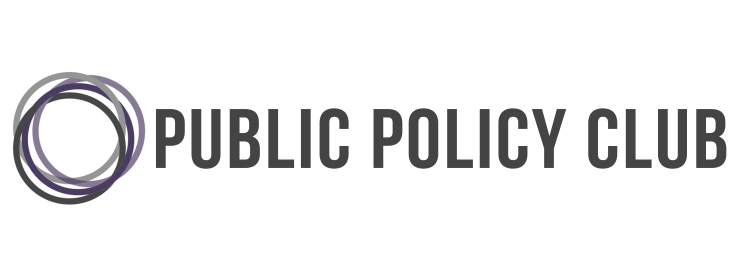By Matt Fletcher
With the formation of the new Labour-led Government, Auckland’s congested and unsustainable transport network may see new solutions to vastly improve the lives of Aucklanders, and enhance New Zealand’s status as one of the fastest growing economies in the world. This article will discuss the merits and drawbacks of the new Government’s infrastructure plans for transport in Auckland.
The Current State of Transport in Auckland
New Zealand’s largest city, due to its increasing economic power and prosperity, has seen a significant rise in residents over the past few years. Auckland’s population grew by 2.6% in 2017 alone [1]. In addition, the number of people working in the Central Business District increased by 22% between 2012 and 2017, with public transport commuters tripling during this period [2]. With this immense economic and population growth, the city’s roads and motorways face a worsening state of gridlock [3].

In addition to the vast amount of time wasted for thousands of Auckland commuters, a 2017 Report issued by the Employers and Manufacturers Association (EMA) revealed that the current state of transport in Auckland costs upwards of $2 billion a year in lost productivity, stifling economic growth, and reducing the potential to provide higher living standards [4]. According to EMA Chief Executive Kim Campbell, amending such issues can achieve almost 30% improvement in economic productivity across New Zealand. With continuing increases in Auckland’s population, an ongoing failure to change the state of transport will cost this country even more in the future [5].
These striking figures are reflected in the current state of public transport. The Council-operated organisation, Auckland Transport, noted that overcrowding on buses and trains has become increasingly prevalent. The number of bus and rail journeys are expected to increase by factors of two and five respectively within the next three decades [6]. However, the outdated Auckland rail network fails to accommodate the city’s growing status as a major metropolitan area. Commutes from the CBD to key population hubs such as Newmarket, Morningside, and New Lynn currently take significantly longer by rail than they ought to under an efficient and comprehensive transport plan [7].
The Solution: Investment in Efficiency
The central remedy to ongoing issues faced by Aucklanders is to invest in public transport and free up the city’s bottlenecked motorways. In particular, this will rely on increased efficiency and accessibility of railways and buses.

Auckland Council’s capital transport venture is the City Rail Link, an ambitious 3.4 kilometre extension to the City’s rail network that will run underground between the existing Britomart and Mount Eden train stations, and include two new stations in the City Centre: Aotea and Karangahape [8]. Construction began late 2015 and the following year, the National-led Government agreed to grant Auckland Council 50% of the funding for the City Rail Link [9]. This project is a vital step towards providing Auckland’s population with an accessible, uncongested, and well-linked CBD. Upon the completion of the City Rail Link ¾ estimated to be in 2024 ¾ the number of residents within 30 minutes travel of the City Centre will effectively double, granting Aucklanders wider access to high-paying occupations, wherein they can contribute to the country’s expanding economy [10]. This is compounded by the fact that the aforementioned commute times from the City Centre to Newmarket, Morningside and New Lynn will be reduced by 55-65% [11].
Auckland Transport was a central issue to the 2017 General Election. In an August interview, the then Transport Minister Simon Bridges emphasised the need to “shuffle forward” infrastructure projects [12]. The National Party broadly touted their consistent commitment to investing in transport infrastructure since taking power in 2008 [13]. Despite this, their efforts have been the subject of frequent criticism from the previous Opposition. Green Party Transport spokesperson, Julie Anne Genter, criticised National’s “poor track record” on transport, citing the East-West link ¾ an expensive $1.85 billion motorway that many believed would do little to ease congestion ¾ as an example of inefficient spending [14].
The Labour and Green Parties both campaigned heavily in 2017 on increasing investment in public transport. Labour considered such investment to be key in making Auckland a “world-class city” [15]. The Green Party emphasised the need for an easily commutable city while simultaneously maintaining healthy working and middle-class incomes, and protecting the environment [16]. Instead of investing in the East-West link, New Zealand’s left-wing parties proposed directing those same tax funds towards more efficient infrastructure projects [17]. The former opposition’s central transport priority was the construction of a Light Rail line that will extend from the City Centre to Auckland Airport [18]. Not only will this new line provide easy transportation between the CBD and airport ¾ a vital component of a well-linked, world-class city ¾ it will also connect to existing train stations such as Onehunga and Mount Eden, serving the residents of areas such as Mount Roskill, Hillsborough, and Māngere [19].
New Transport Minister Phil Twyford has confirmed this project as a central transport priority of the Sixth Labour Government [20]. Overall, the Labour Party’s proposed transport package costs around $15 billion over a decade, compared to the National Party’s counterpart transport package, which costs $13 billion over the same timeframe [21].
Criticisms: Diversion, Inefficiency, and the Regional Fuel Tax
The new Government’s transport proposals have also been subject to criticism, particularly by National in its role as opposition.

Opposition Transport spokesperson Judith Collins has contended that the interests of Auckland’s motorists are much better served by improvements to roads, rather than by the ambitious rail projects proposed by the incumbent Government [22]. According to officials, the proposed airport line would be considerably more expensive than the option of improving existing airport buses [23]. National’s central qualm, however, is Labour’s proposal to enable Auckland Council to implement a regional fuel tax, now approved by the Council, that will increase the cost of fuel by 11.5 cents per litre [24]. Combined with a fuel excise duty increase of 9 -12 cents per litre, this tax will see Auckland motorists paying upwards of 20 additional cents per litre when the policy takes effect on July 1st [25]. These consumption tax increases, combined with the diversion of funds away from populated roads, have prompted critics to argue that many Aucklanders will see their tax dollars invested in projects that will benefit significantly fewer tax-paying residents than road improvements otherwise would [26].
The most crucial point of backlash to this policy is that, like many consumption taxes, it is heavily regressive in nature. Transportation is an integral living cost, and with this tax being estimated to roughly double the annual cost of operating a motor vehicle from $125 to $250, the short-term burden will lie with Aucklanders on low incomes [27]. The Salvation Army noted that Auckland’s rising living costs have led to a significant increase in the demand for food parcels and that a tax such as this will only place further strain on Auckland’s poorest motorists [28]. In addition, such a policy arguably runs counter to the Labour Party’s campaign promise of ensuring a fair and progressive tax system, wherein those from lower socioeconomic backgrounds will not be saddled with a heavy duty burden [29].
Conclusion
Transport is a pressing and central issue for Auckland’s 1.5 million residents. Both sides of the political landscape have emphasised the striking issues within the city’s current network, and the need for change. While both the incumbent and past Governments have been criticised for investing in inefficient public projects, the transfer of power from one party to another has revitalised hopes of ambitious new transport projects. These should make the daily commutes to and from working environments more bearable, and ensure a prosperous future for the City of Sails.
[1] https://www.stats.govt.nz/news/population-growth-fastest-in-northland-auckland-and-waikato
[3] https://www.labour.org.nz/tax
[4] http://aucklandbuildexpo.com/2b-is-spent-annually-on-auckland-traffic-congestion/
[5] Ibid.
[7] Ibid.
[8] https://www.transport.govt.nz/rail/metro-rail/auckland-city-rail-link/
[10] https://www.cityraillink.co.nz/crls-benefits/
[11] https://www.transport.govt.nz/rail/metro-rail/auckland-city-rail-link/
[13] https://www.national.org.nz/transport
[15] https://www.labour.org.nz/transport
[16] https://www.greens.org.nz/policy/environment-policies/auckland-transport-plan
[17] Ibid.
[18] https://www.nzherald.co.nz/nz/news/article.cfm?c_id=1&objectid=11900769
[19] Ibid.
[20] https://www.nzherald.co.nz/nz/news/article.cfm?c_id=1&objectid=12057244
[21] https://www.labour.org.nz/tax
[22] https://www.national.org.nz/government_to_divert_road_taxes_to_rail
[23] https://www.nzherald.co.nz/nz/news/article.cfm?c_id=1&objectid=12057244
[24] https://www.stuff.co.nz/auckland/104356124/Auckland-Council-approves-regional-fuel-tax
[26] https://www.national.org.nz/government_to_divert_road_taxes_to_rail
[28] Ibid.
[29] https://www.labour.org.nz/tax
Photo Credit:
https://www.hotcity.co.nz/events/auckland-conversations-transport-funding-new-10-year-budget
https://www.nzherald.co.nz/nz/news/article.cfm?c_id=1&objectid=12002410
The Public Policy Club is a non-partisan club at the University of Auckland that aims to encourage, educate and involve students from all backgrounds in the education and development of political knowledge. The views and opinions expressed in this article are those of the author and do not necessarily reflect those of PPC.




